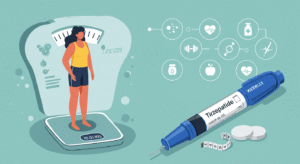Testosterone Replacement Therapy (TRT) has emerged as a transformative approach for those experiencing low testosterone levels. It promises not just a return to vitality but an overall improvement in quality of life. If you’re considering embarking on this journey, it’s crucial to arm yourself with comprehensive knowledge. This guide aims to offer a deep dive into TRT, covering the basics, the process, and what to expect.
Understanding Testosterone and Its Impact
Testosterone, a hormone primarily produced in the testicles, plays a pivotal role in male health. It influences muscle mass, bone density, red blood cell production, and sexual function. However, testosterone levels naturally decline with age, leading to various symptoms like fatigue, mood changes, decreased muscle mass, and reduced libido.
Recognizing the Need for TRT
The decision to start TRT should not be taken lightly. It’s essential to recognize the signs of low testosterone, which can be subtle or mistaken for aging. Symptoms include:
- Decreased energy levels
- Mood swings and depression
- Reduced muscle mass and increased body fat
- Diminished libido and sexual performance issues
- Difficulty concentrating
If these symptoms sound familiar, the next step is to consult a healthcare provider. They will likely suggest blood tests to confirm low testosterone levels.
Consulting with Healthcare Professionals
Choosing the right healthcare provider is crucial. Look for someone specializing in hormonal health or endocrinology. During your consultation, be open about your symptoms, medical history, and expectations. Your doctor will evaluate whether TRT is suitable for you and discuss potential benefits and risks.
Understanding the Forms of TRT
TRT can be administered in several ways, each with its pros and cons. Common forms include:
- Injections: Typically done weekly or biweekly, offering a cost-effective and efficient way to maintain testosterone levels.
- Gels and creams: Applied daily, these offer a non-invasive option but require caution to prevent transfer to others.
- Patches: Worn on the skin, offering a steady hormone level but can cause skin irritation for some.
- Pellets: Implanted under the skin every few months, providing a long-term solution but requiring a minor surgical procedure.
Initiating the Therapy
Once you and your doctor decide on the best TRT form, you’ll start the treatment. It’s vital to follow the prescribed dosage and administration instructions closely. Regular follow-ups are crucial to monitor your progress and adjust the treatment as necessary.
Monitoring and Adjustments
TRT is not a “set it and forget it” treatment. Regular blood tests are essential to monitor testosterone levels, ensuring they stay within a healthy range. Depending on your response, your healthcare provider may adjust your dosage. Be patient; it can take a few weeks to a few months to notice significant improvements.
Lifestyle Considerations
While TRT can significantly improve your quality of life, it’s most effective when combined with a healthy lifestyle. Consider incorporating:
- Regular exercise: Especially strength training and cardiovascular workouts to enhance the effects of TRT.
- Balanced diet: Focus on a diet rich in vegetables, fruits, lean proteins, and healthy fats.
- Adequate sleep: Ensure 7-9 hours of quality sleep per night to support hormonal balance.
- Stress management: Techniques like meditation, yoga, or therapy can help mitigate stress’s adverse effects on testosterone levels.
Potential Side Effects and Management
Like any treatment, TRT comes with potential side effects, including acne, fluid retention, increased red blood cell count, and alterations in cholesterol levels. Discuss these with your doctor and understand how to manage them effectively.
A Long-term Perspective
TRT is often a long-term commitment. It’s essential to maintain ongoing communication with your healthcare provider, adhere to the therapy, and adjust as your body and health status change over time.
Final Thoughts
Starting TRT can be a life-changing decision for those struggling with low testosterone. By understanding the therapy, working closely with healthcare professionals, and adopting a healthy lifestyle, you can navigate this journey successfully. Remember, the goal of TRT is not just to increase testosterone levels but to improve your overall quality of life.


